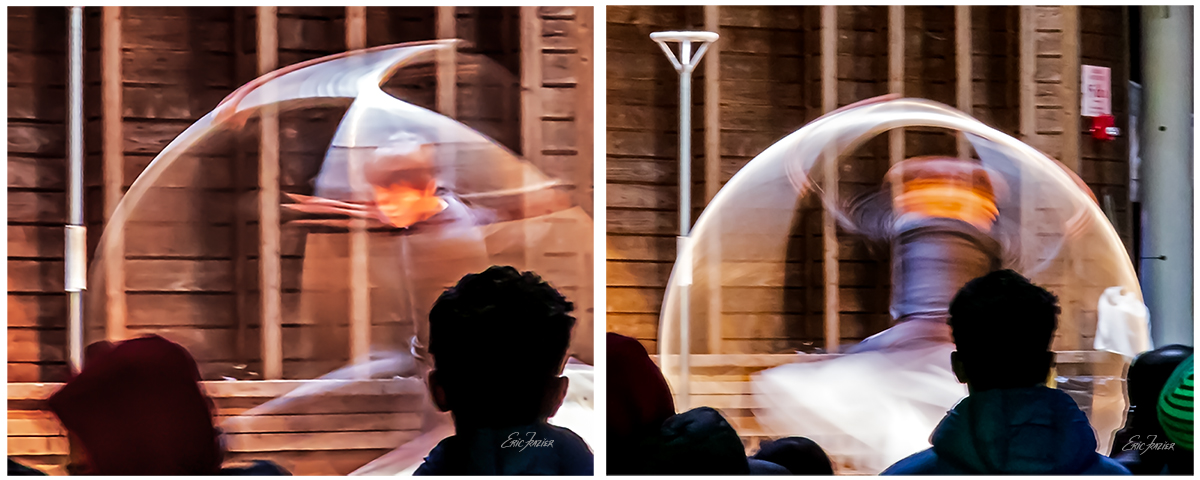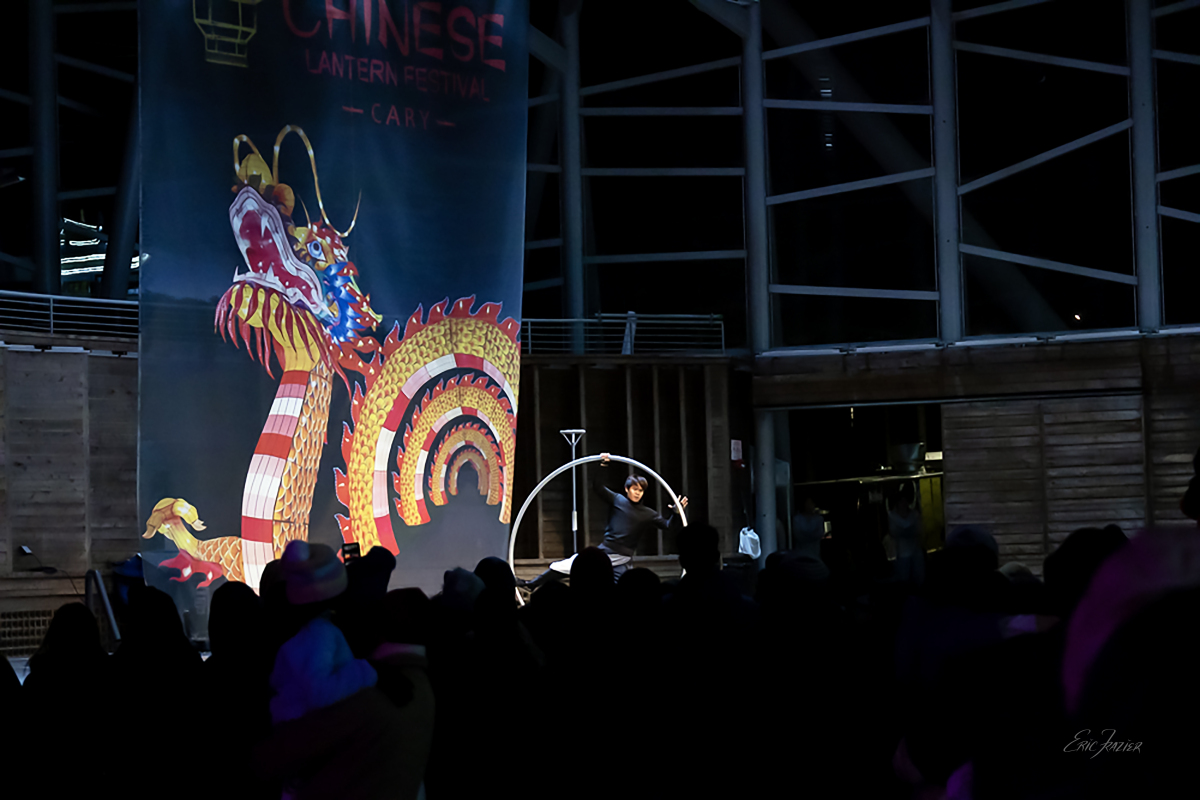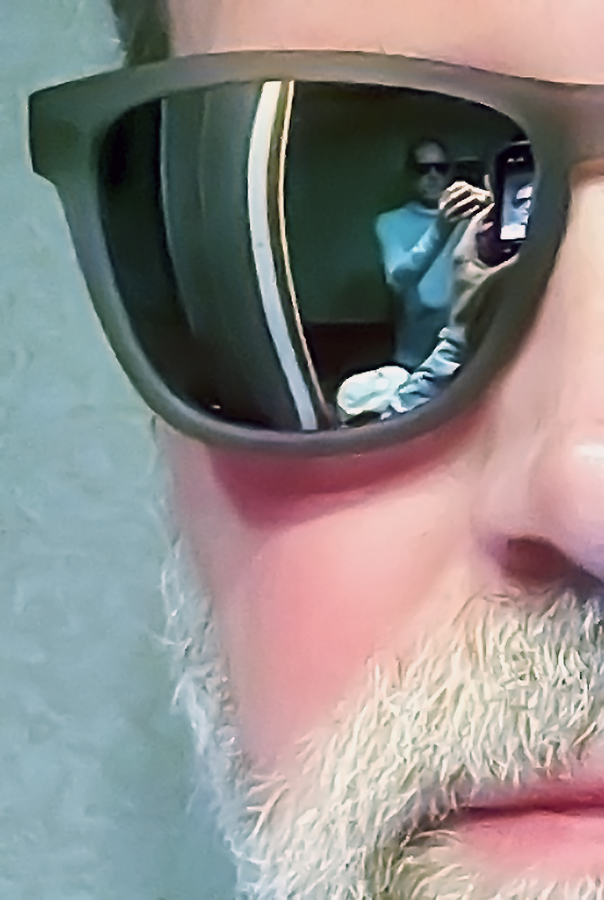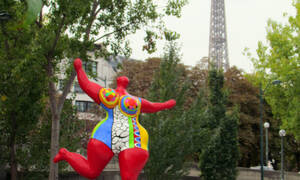I’m always curious about the origin of words and phrases, and two photos I made a split-second apart brought to mind the phrase, “in the blink of an eye.”
I was puzzled. Why can we see the hoop spinning rapidly in both, but the first shows the acrobat’s head ghostly still, while the second is grossly distorted?

These two frames are sequential burst-mode exposures I made of a hoop acrobat performing Jan. 2, 2025, at the North Carolina Chinese Lantern Festival in Cary, N.C.
The event is held outdoors at night and features elaborately staged scenes of sculptures crafted in the style of Chinese paper lanterns. Most incorporate modern LED lighting and computer-controlled effects. These creations make for stunning nighttime photographs.
When the hoop performer began his routine, I decided to experiment with shutter speeds, both to accentuate the spinning and to see if I could freeze his motion. Although cropped a bit differently, both motion photos bear identical camera settings and are time-stamped a second apart.
I cannot recall the routine from memory, but the image with his head not blurred suggests he must have been motionless within the twirling hoop for “the blink of an eye” as he transitioned from one move to another. The hoop’s apex also indicates an abrupt change in its angular motion. Like a magician’s sleight-of-hand, the acrobat’s manipulation of the hoop were seamless to the eye.
The full-frame photo below shows my vantage point in the audience. It came about 10 seconds after the others. I reset my shutter speed to 1/000-second and opened my lens to f5.6. Once again, my ISO, on AUTO, rang up a sizzling 12800. I’ve tamed the noise with a generous swipe right of the manual luminescence slider in Adobe Camera Raw.

Back to my inquiry
A quick internet search found general consensus that “in the blink of an eye” evolved from the biblical phrase, “in the twinkling of an eye,” found in I Corinthians 15:52. The modern-sounding “blink” version has been found in literature since the 1300s. I find this an improvement, since a “twinkle” in the eyes has come to have a different connotation from opening and closing them.
And just how fast is the blink of an eye? The human range is 100 to 400 milliseconds, or about one-tenth to nearly half a second. That puts a 1/4-second shutter speed right in the ballpark. But it’s a hard handheld shot in low light. I was happy to get these.




